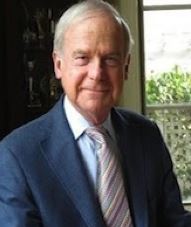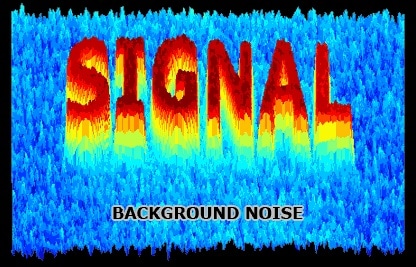EDITOR’S NOTE: The Lancet Commission on dementia prevention, intervention, and care published a report last week that highlights recommendations for policy makers and individuals to help reduce dementia risk worldwide. The report comes on the heels of a potential game-changer for those coping with the ill-effects of dementia – an easy-to-use blood test to diagnose Alzheimer’s disease, also published last week in JAMA.
As many of our readers might recall, The Lancet Commission published a comprehensive, landmark report on this topic just three years ago, but the science in this area has been rapidly changing. In their updated report, published on July 28, the Commission added three new risk factors: The newly identified factors are 1) traumatic brain injury in mid-life, 2) exposure to air pollution in later life, and 3) excessive alcohol use, defined as more than 14 drinks a week.
To the right is a figure from the report (click to enlarge). It shows all 12 risks across the life course, and how much the reduction of each factor could potentially reduce the prevalence of dementia, worldwide. In theory, up to 40% of dementia cases could be prevented or delayed by modifying all 12 risk factors — up from the 35% in the 2017 report.
Of note to hearing care professionals is that the largest modifiable risk factor, contributing 8% to the overall 40% of potentially modifiable risk factors, is hearing loss. A percentage that is down from 9% in the 2017 report. Given that hearing loss is the leading modifiable risk factor in midlife, it makes sense for healthcare professionals to promote the use of hearing protection in high noise areas for everyone, and to encourage routine and periodic hearing screening beginning in middle age, in addition to the use of hearing aids when indicated.
Of course, encouraging people to engage in the process of routine hearing screening is not easy. As a recent AJA study suggests, even when an easy to use app-based hearing screening is available, 86% of those individuals failing the hearing screening and requesting to be contacted by an audiologist did not initiate further action. Further, of the more than 3,000 individuals who failed the hearing screening, just over half of them believed they did not have a hearing loss.
The challenge might be even more daunting when in comes to encouragement of hearing aid use. Not only are hearing care professionals plagued by the usual suspects like stigma, inconvenience and complacency – typical behaviors for persons with chronic conditions, but the evidence that hearing aid use stymies the trajectory of dementia is conflicted, as a recent study from the UK suggests. What is more, as Barbara Weinstein and Jan Blustein in JAMA Otolaryngology recently pointed out, many marketing claims in the industry surrounding the topic of hearing aid use and dementia are misleading and inaccurate.
If hearing care professionals want to be a paragon of trust and integrity, it’s critical that we stick to the science and refrain from erroneous, confusing and deceptive claims, and when they seek our services we avoid the perception we are trying to sell persons with hearing loss something.
To help us unravel these issues – balancing the needs of persons with hearing loss with the demands of trying to run a business during a once-in-a-century pandemic, we turn to entrepreneur and advocate, Terry MacTaggart. Terry has offered his thoughtful opinion with us previously in Part 1, Part 2, Part 3 of his on-going HHTM series. Now, he offers some valuable insights on how we can better serve our customers – persons coping with hearing loss and communication challenges during one of the most uncertain moments in our lifetimes.
–Brian Taylor, AuD, Editor-at-Large
Serving the Consumer – a New North Star?

Terry Mactaggart
Concerns about coping with the COVID-19 crisis and what may lie beyond has preoccupied our personal and professional lives thus far in 2020. And they will undoubtedly linger for a considerable time yet.
One silver lining is a growing recognition of the importance of relating to our clientele at a distance – i.e. by relying on the Internet using contemporary communication processes as well as direct-to-consumer hearing detection and treatment technologies.
Responding to these needs can presage a more effective approach to improving and extending care for those currently in the system in addition to providing hearing health knowledge and services to the many millions who have been left out. There are compelling reasons to set such a goal as our New North Star!
For more than seven years, we’ve argued that our scope of hearing health delivery is falling short and the industry as we know it will inevitably be disrupted. The breadth of the hearing problem, the way it traditionally has been managed, coupled with the growth of personalized medicine and consumer electronics has made that a safe bet. Past HHTM posts have highlighted this conviction further and offered views about the implications, including what further developments and adaptations should be anticipated.
Underlying these perceptions has been a quest for a 21st century model that can be applied much more widely, yet remain profitable.
The Basic Premise — Given the large number of people who are uninformed or otherwise distracted and are clearly not engaged, hearing loss has become the largest untreated chronic health issue in our society. In fact, taking we now know about the consequences of ignoring or delaying detection and treatment, it’s grown to become a serious public health problem. This series of posts enlarge on this foundation by focusing on the consumer and how this deficit should be addressed.
Let’s start with “the facts”
The customary numbers are well known. About 48 million Americans (say 15% of the population) report some degree of permanent hearing loss, age being the strongest predictor. Adding 5 million more for Canada brings the total to well over 50 million. At best, slightly more than 20% of these have been treated with hearing devices, of whom at least that same percentage (about 20%) become non-compliant soon after fitting.
Having accumulated well over 160,000 structured hearing data sets from the general public, including those with signs of hearing change within the normal range, we can assert with confidence that these estimates are outdated and understated, likely by at least 50%.
Our conservative estimate of those impacted in both countries combined lies between 70-75 million people. And we can anticipate that number will grow, not only as a function of Boomers aging but also because of what is expected to become a tsunami of younger people joining the cohort because of their “crank up the sound, forever listening-with-buds” lifestyle.
Against this landscape and using typical metrics, it’s very hard to argue that our industry is serving consumers well. Issues that we will tackle in my next post.
**Stay tuned for Part 2 next week!
Terry Mactaggart is the President and CEO of Ultimate Kiosk Inc. and Summus Hearing Solutions Inc., AI-enabled software companies with proprietary technologies aimed at capitalizing on opportunities in international hearing health. He has substantial experience with private venture creation, financing and growth as an investor, consultant, director, chairman and president of a number of companies – both privately owned and publicly traded – as well as of a private equity fund. A broad international perspective has been gained from these activities as well as from his leadership of The Niagara Institute and his time with the World Bank. Terry has a BA (Political Science and Economics) from the University of Toronto and an MBA from Stanford University.






